— 11 min read
6 Phases of Construction Project Management Explained


Last Updated Jul 31, 2025

Jonny Finity
Senior Content Manager
28 articles
Jonny Finity creates and manages educational content at Procore. In past roles, he worked for residential developers in Virginia and a commercial general contractor in Bar Harbor, Maine. Jonny holds a BBA in Financial Economics from James Madison University. He lives in New Orleans.

Julia Tell
Contributing Writer
64 articles
Julia Tell is a freelance writer covering education, construction, healthcare, and digital transformation. She holds a Ph.D. in Media & Communications and has written for publications including Business Insider, GoodRx, and EdSurge, as well as nonprofits, international businesses, and educational institutions.
Last Updated Jul 31, 2025

Construction projects are like no other. Each one is unique, having different participants, variable conditions, and one-off requirements. But across them all, construction project phases are strikingly similar.
Project planning in construction is the process of creating a detailed roadmap for building a structure, encompassing all phases from initial concept to completion. Organized plans cover scope, schedule, budget and resources, with clear communication protocols to support informed decision-making. Thorough planning reduces risk, improves efficiency and increases the likelihood of delivering the project on time, within budget and to quality standards.
Table of contents
Key Aspects of Construction Project Planning
Project planning in construction involves integrating various elements that help organize, manage, and execute construction activities efficiently and within defined parameters. Project teams create and refer to these essentials throughout the phases of construction for a successful project outcome.
- Scope Management: Clearly outline and oversee project objectives, requirements and constraints.
- Timeline and Schedule: Develop a realistic timeline with milestones, deadlines and task dependencies.
- Resource Allocation: Identify and effectively assign necessary labor, materials, and equipment.
- Cost Estimation: Accurately forecast project expenses to maintain the budget.
- Risk Management: Identify potential issues and create mitigation strategies.
- Communication: Establish clear information flow among all stakeholders.
- Work Breakdown Structure (WBS): Break down the project into manageable tasks.
- Critical Path Method (CPM): Identify the sequence of critical tasks impacting the project timeline.
Now, let's take a look at the six main phases of construction project management common across most project life cycles.
1. Project Design
The construction phases of a project’s life cycle begin with its design. Here, the owner builds the case for constructing the project, bringing in consultants to help determine costs, financial rationale and technical considerations. Sometimes, after all is considered, the owner might find the project is not workable. If the project does move forward, an initial project charter — a short document outlining the project's goal, scope and stakeholders — will be created.
Making a Business Case
Whether it’s a high-rise office building or a low-rise multifamily housing project, owners must always satisfy a business case for the project. In this part of the design phase, the owner envisions the property’s use and the financial incentives for that use.
Conducting a Feasibility Study
The feasibility study either convinces the owner the project is possible, flags it as needing adjustments, or shows it as a no-go. In this part of the design phase, the owner considers variables ranging from land use to construction costs while fine-tuning the best use. If the project is deemed possible, then it moves into the next phase.
Defining the Project Scope
In the scoping phase, the owner works closely with architects, engineers, and sometimes even contractors to decide the project size and features. Having determined the feasibility and business case for the project lays the groundwork for determining the project scope. The goal is to match the finished project to its immediate use after construction and to accommodate additional uses as the project ages. At this phase, the design team renders all the drawings and specifications needed to build the project.
Who’s involved in construction project planning?
Here are the main participants in most construction planning processes and their roles:
- Client and Financier: The client or owner defines the project’s objectives and scope. The financier provides the necessary funding and delineates budget constraints.
- Engineers and Architects: These teams develop detailed designs, blueprints, and technical specifications.
- Contractor: The GC conducts preconstruction planning sessions and manages on-site operations and the workforce.
- Consultants: Consultants assist in planning and risk management and provide solutions to complex technical challenges. They may have expertise in specific areas such as environmental impact, legal compliance and geotechnical feasibility.
- Suppliers: Involving suppliers to address material specifications and availability early assists in planning.
2. Procurement Planning
With the project plans completed, the owner moves the project to the next phase. In this second of the construction project phases, the goal is to assemble the team that will do the construction.
Selecting the Delivery Method
A prime consideration for any project is the delivery method. Until the last decade, owners almost always chose the design-bid-build delivery method. Today, more and more projects are opening up to design-build and integrated project delivery. These collaborative construction processes lead to lower costs and better project outcomes. The owner chooses the delivery method that will best fulfill the project’s goals.
Selecting Participants
The owner often selects project participants by inviting contractors or construction managers to bid on the project. Sometimes the owner may already have a working relationship with particular contractors, like is often the case with corporate owners, so they will invite them to the project.
Sometimes contractors submit hard bids to win the project, while other times, the contractors and owners work together to design and price the project. In all cases, the owner is trying to achieve the best value for the money while rendering the project as close to their original intent as possible.
Awarding Contracts
Awarding contracts is the last part of the procurement planning phase. The owner must weigh multiple factors in selecting the builder. Price is a top consideration, but the builder’s track record, its ability to insure and bond for the project and the builder’s experience with similar projects all figure into the decision. The selected contractor will negotiate and contract with vendors and subcontractors to fulfill the project requirements as the project heads into preconstruction.
Stay updated on what’s happening in construction.
Subscribe to Blueprint, Procore’s free construction newsletter, to get content from industry experts delivered straight to your inbox.

3. Project Preconstruction
With contracts signed, the general contractor or construction manager gets to work on all details needed to start construction.
First, they must round out the required help. Most GCs and CMs will come to the job with a group of subcontractors already known to them. However, specialty aspects of the project often require them to locate and partner with specialists. The GCs and CMs spend much time at this phase bringing people, materials, and equipment together, and planning everything out.
Obtaining Permits
Few localities exist where you don’t need permits for construction. Contractors get to work pulling permits for everything from utility work to building code requirements.
Site Surveying
Contractors consult site surveys to confirm their understanding of what already exists on the construction site. These surveys often find conditions that weren’t included in the contract documents. This is the first opportunity contractors have to record and begin managing the inevitable surprises inherent in any construction project.
Creating a Risk Management Plan
Almost all contracts today require the contractor to have a formal risk management plan. The contractor must assess all the project risks and make plans for eliminating them, controlling them or insuring against them. Besides protecting the owner, these plans help the contractor foresee and avoid surprise costs arising from risks. For instance, the plan should include mitigation strategies for identified risks, such as shifting work schedules in the event of potential supply delivery delays.
Setting up a Safety Plan
While safety is also a risk item on construction projects, contractors usually deal with it separately because safety risks are so far-reaching. They often involve life and death, so contractors want to make them a top priority.
Creating Work Breakdown Structures
Contractors break construction projects into activities and tasks. Activities are the units of construction, like pouring the foundation. Tasks are the steps needed to complete those activities. A work breakdown structure (WBS) lists all the tasks needed for each activity. Many construction projects have thousands of activities, so the WBS creates a clear roadmap from project start to project end.
Designing the Project Schedule
It’s the project managers' and schedulers’ jobs to turn the WBS into a schedule that work crews can follow. The schedule reflects the longest time to project completion. It includes milestones so managers can assess how well the project is hitting its schedule.
What are some common construction planning techniques?
In construction planning, various structured approaches can be used to manage timelines, resources, and tasks. These construction processes give teams greater predictability and control over project outcomes.
- Critical Path Method (CPM): Identifies the sequence of dependent tasks
- Program Evaluation and Review Technique (PERT): Analyzes task durations using probabilistic time estimates
- Line of Balance (LOB): Synchronizes production rates with project timelines
- Q Scheduling: Manages overlapping tasks using location-based sequencing
- Resource-Oriented Scheduling: Focuses on efficient resource utilization and allocation
- Last Planner System® (LPS): Collaborative planning to improve workflow reliability
- Gantt Chart: Visual timeline for scheduling and tracking tasks
Setting up a Communications Plan
Construction contracts often require contractors to have a communications plan that meshes with the project comms plan. Here, the contractor specifies how required and time-sensitive communications should take place, establishing clear protocols for all stakeholders involved. They also include accountability controls so parties to the contract know their responsibilities for communicating project information.
4. Project Execution
The fourth phase is where all the earlier work gets validated — or not. As plans meet reality, teams need to implement the communications plan, keeping stakeholders in the loop as adjustments to the plans become necessary. Teams need the flexibility to accommodate changing circumstances while maintaining quality standards.
Preconstruction Meetings
Contractors kick off the project with preconstruction meetings. During these meetings, all the parties review the project so they understand their roles and how they fit into the wider project.
Procuring Resources
GCs and specialty contractors procure all the materials, parts and equipment needed for their portions of the work. They also set up their work crews and labor management plans.
Free Download
Construction Procurement Log Template
This free procurement log template can be downloaded to use in Google Sheets or Excel — and is customizable to fit any project.
- Free starter template
- Ready-to-use
- Created especially for construction
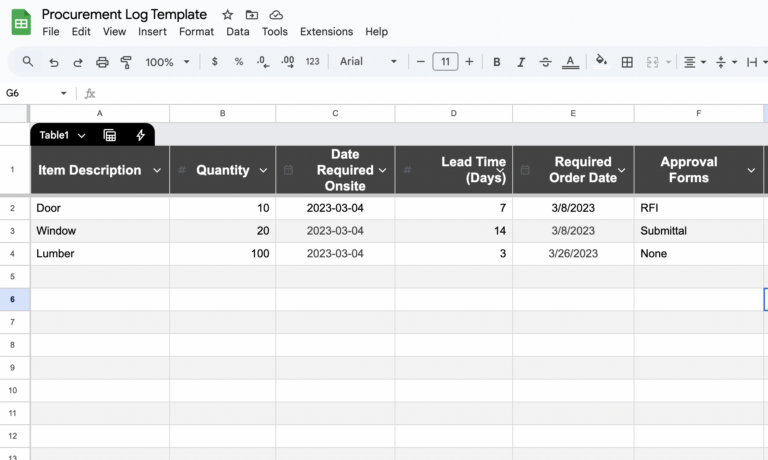

Starting Activities
This part of the project execution phase is where the physical work begins. Contractors take virtual, or 2D plans, and turn them into 3D.
5. Project Control
Without controls, construction projects can get gravely sidetracked. There are too many moving parts and too many variables to operate without controls. While keeping a close eye on work quality, schedule and budget, it’s also necessary to monitor and mitigate risks as laid out in the risk management plan.
Tracking Work
Once construction is underway, this is the most important of the construction project management phases. Without adequate tracking, it’s very easy to lose control of the activities. This is where many PMs rely on web-based construction management software because it’s always on and has the most recent project information.
Tracking Activities Against Time Objectives
Each construction schedule sets a time limit for each activity. Getting done early can sometimes throw a timeline off as much as getting done late, so project managers want to see how closely crews are hitting the scheduled times.
Tracking Quality of Activities and Tasks
Rework and change orders fill the day without quality checks. Each task must meet the assigned quality. Otherwise, tasks coming after can also miss the quality mark.
Adjusting the Schedule
As project managers pore over the times and quality aspects of projects, they sometimes must adjust the schedule to reflect the project’s latest trajectory. Adapting schedules effectively to address design or scope changes demands strong change management skills.
Tracking the Budget
All parties working on the project have their own budgets to track. However, the GC or CM must also track the overall project budget. If the budget looks like it might start running in the red, the GC or CM must find the reason — and quickly.
6. Project Closure
Delivering the Punch List
The punch list shows all the problems with the job that must get corrected before closeout. Crews work on the portions of the punch list that match their specialties.
Free Download
Construction Punch List Template
Download a free fully customizable punch list template to stay organized and track responsibilities of punch work during closeout.
- Free customizable template
- Ready-to-use
- Designed specifically for construction
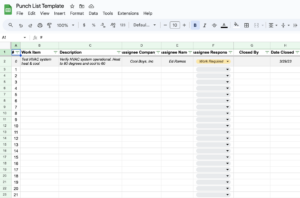

Commissioning
For projects involving buildings, this closeout aspect certifies that all the equipment and systems work properly.
Budget Closeout
Closing out the budget means that everyone can receive the final monies owed to them. If the owner and GC have withheld retainage, then this lump sum also comes due.
Post-project Evaluation
Identifying lessons learned involves analyzing project documentation, conducting team debriefs and gathering feedback from clients and stakeholders to identify strengths and areas for improvement to guide future project strategies.
Building Framework for Project Planning
It’s no coincidence the early construction project phases are more mired in detail than the later ones. Wise owners and contractors have figured out that an ounce of planning can cancel out many pounds of rework and mistakes. The construction project phases provide the framework for well-planned projects.
Was this article helpful?
Thank you for your submission.
96%
4%
You voted that this article was . Was this a mistake? If so, change your vote
Scroll less, learn more about construction.
Subscribe to The Blueprint, Procore’s construction newsletter, to get content from industry experts delivered straight to your inbox.
By clicking this button, you agree to our Privacy Notice and Terms of Service.
Thank you!
You’re signed up to receive The Blueprint newsletter from Procore. You can unsubscribe at any time.
Categories:
Written by

Jonny Finity
Senior Content Manager | Procore
28 articles
Jonny Finity creates and manages educational content at Procore. In past roles, he worked for residential developers in Virginia and a commercial general contractor in Bar Harbor, Maine. Jonny holds a BBA in Financial Economics from James Madison University. He lives in New Orleans.
View profile
Julia Tell
Contributing Writer | Procore Technologies
64 articles
Julia Tell is a freelance writer covering education, construction, healthcare, and digital transformation. She holds a Ph.D. in Media & Communications and has written for publications including Business Insider, GoodRx, and EdSurge, as well as nonprofits, international businesses, and educational institutions.
View profileExplore more helpful resources
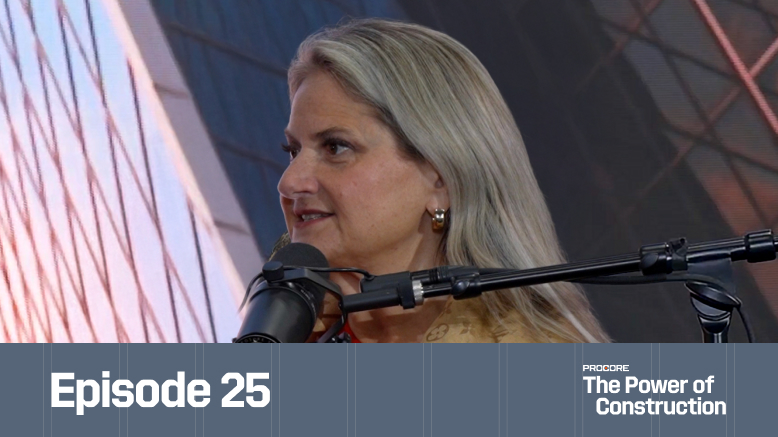
Who is accountable for innovation in construction?
Everyone says construction needs to innovate—but no one agrees on who’s actually responsible for making it happen. Is it the owner? The builders? The tech vendor? Or is innovation everyone’s...
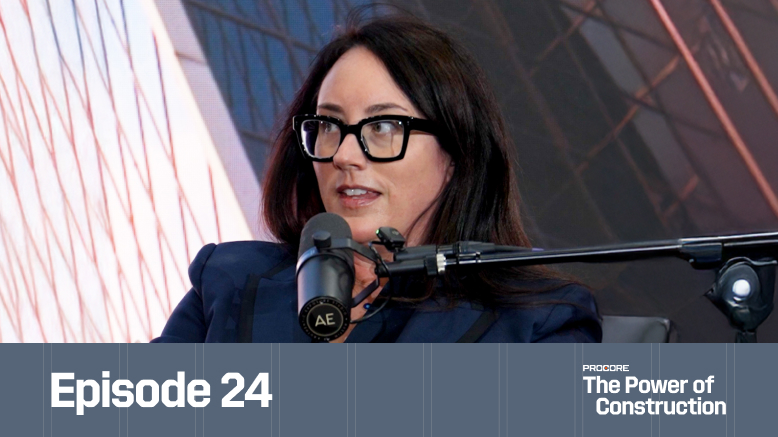
How Are Partnerships in Construction Being Redefined?
In a market where cost, speed, and quality are table stakes, owners are demanding more than projects delivered on time and on budget. They want trusted partners who bring strategy,...
What Does Construction Leadership Look Like in the Age of AI?
In this episode of The Power of Construction, hosts Sasha Reed and Andy Rampton examine how AI is reshaping leadership across industries. Guests Fiona Wilhelm, Director of Artificial Intelligence at...
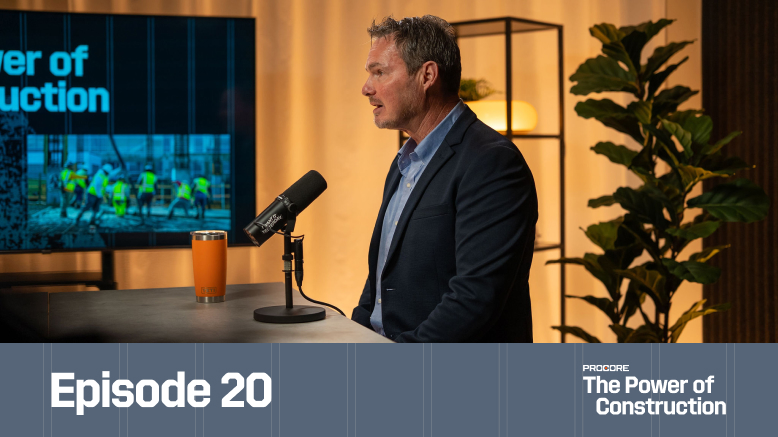
What Drives Better Safety Outcomes—Carrot, Stick, or “Zero Harm”?
On paper, construction has never looked safer. In reality, mental health claims are rising, workers are disengaged and the compliance playbook is broken. Garry Mansfield, co-founder of Scratchie, argues the...
Free Tools
Calculators
Use our calculators to estimate the cost of construction materials for your next project.
Templates
Find a template to help you with your construction project tasks.
Material Price Tracker
Get the latest U.S. retail prices and view historical trends for common building materials.
Glossary
Explore key terms and phrases used in the industry.
